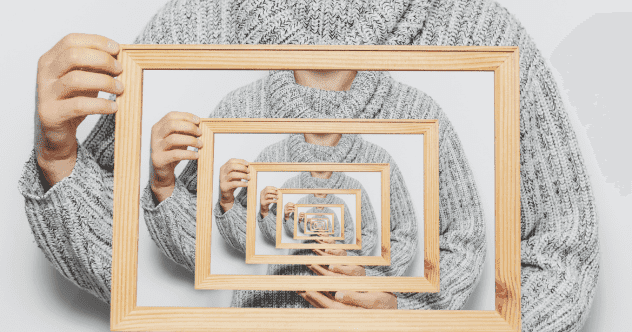Optical illusions are visual tricks that play with your perception, making you question what you see. They’re not just fun; they also provide insights into how our brains process information. Get ready to explore ten mind-boggling optical illusions that will leave you amazed by the power of your mind.
The Vanishing Dots
Imagine a grid of dots evenly spaced on a black background. When you stare at the center, the surrounding dots seem to disappear! This is the Hermann Grid illusion at work.
This happens because of how your eyes and brain work together to perceive contrast. When you focus on one dot, the contrast of the surrounding dots decreases, making them fade away. Scientists use this illusion to study visual processing in the brain.
The Rotating Snakes
This illusion features a series of snake-like patterns that appear to be rotating, even though the image is static. Your eyes perceive movement where there is none!
The rotating snake illusion demonstrates how our brains are wired to detect motion. The patterns and contrasts in the image mimic movement, causing your brain to fill in the gaps and create the illusion of rotation.
The Impossible Triangle
Also known as the Penrose Triangle, this illusion presents a 3D triangular figure that seems impossible. Each segment connects seamlessly, forming a never-ending loop that defies the laws of physics.
Created by mathematician Roger Penrose, this optical art masterpiece can be drawn on a flat surface and looks plausible from a specific angle. However, it cannot exist in three dimensions, making it a true paradox.
The Ames Room
The Ames Room is a specially constructed room that warps your sense of perspective. When viewed through a peephole, it appears to be a normal, rectangular space. However, people inside the room seem to magically change size depending on their position.
This illusion uses distorted angles and proportions to trick your brain into perceiving a space that doesn’t exist. It’s often used in film to create scenes where characters appear to be different sizes, such as in The Lord of the Rings.
The Floating Cube Illusion
This illusion makes a cube appear to levitate in mid-air, challenging your depth perception. The cube seems to pop out from the background or even rotate without any logical explanation.
In reality, the cube is a two-dimensional image cleverly designed to create the illusion of depth and movement. The use of perspective and shading tricks your brain into perceiving a 3D object.
The Café Wall Illusion
This illusion features alternating rows of black and white tiles. The lines forming the rows appear slanted, but when measured, they are perfectly straight. It showcases how our brains interpret patterns and contrast.
First discovered in the 1970s, the café wall illusion is a prime example of the Gestalt principles of visual perception. The contrasting colors and patterns trick our brains into seeing slanted lines where there are none.
The Ambiguous Cylinder Illusion
This illusion presents cylinders that appear to be a mix of squares and circles. When viewed from different angles, your brain struggles to decide whether they’re round or square.
The shapes are indeed cylindrical, but your brain’s interpretation creates the illusion of a shape-shifting object. Created by Japanese mathematician Kokichi Sugihara, this illusion highlights the power of perspective.
The Blivet
The Blivet, also known as the impossible fork, is a bizarre, three-pronged object that defies logic. It appears to have three cylindrical prongs from one angle but only two from another.
Popularized by artist M.C. Escher, the Blivet plays with our perception of depth and perspective. It reminds us that our brains constantly interpret visual cues, sometimes leading us to perceive the impossible as possible.
The Hollow Face Illusion
In this illusion, a concave face mask appears to protrude outward like a normal, convex face. Your brain interprets the face based on familiar expectations, overriding what your eyes actually see.
This illusion demonstrates how our brain’s prior knowledge and expectations can override visual input. It’s a striking example of how context shapes our perception.
The Spinning Dancer
This mesmerizing illusion challenges your perception of motion. The silhouette of a dancer appears to spin either clockwise or counterclockwise, and you can often switch between the two directions.
The Spinning Dancer illustrates the concept of multistable perception, where our brains can perceive the same visual stimulus in multiple ways. It highlights the complex inner workings of our visual system and how our attention can influence perception.
These optical illusions remind us that our perception is not always a direct reflection of reality. They offer a fascinating glimpse into the intricate processes of our brains.
Which illusion blew your mind the most? Leave a comment below and share your thoughts!










